Those of even a mild literary bent will surely have noticed the dearth of creative Masonic fiction in the canon of fraternal literature.
Early American history is rife with tales of such larger-than-life characters as Johnny Appleseed, John Henry, Paul Bunyan, and more, who fueled the American imagination and desire for westward expansion.
We also have many fanciful tales based on actual historical figures, to wit, ‘The Devil and Daniel Webster‘, in which 18th century New England lawyer Daniel Webster drives the Devil out of New Hampshire by beating him in a trial set before an infernally stacked jury, with Satan himself as judge.
Where, it is fair to ask, are our Masonic folk heroes?

William Harvey (1874-1936)
IMAGE LINKED: wikimedia Attribution 4.0 International (CC BY 4.0)
We do have one brother who fits the bill, William Harvey, who did exactly that.
Bro. Harvey’s Masonic career was exceptional, culminating shortly before his death in his role as Provincial Grand Master of Forfarshire in Scotland, 1934-36.
He was born, 1874, in Stirling, Scotland. His father died when William was but three years of age; by the time he reached the age of eleven he was obliged to leave school to work and support the family.
He first apprenticed to a hatter, in 1889 he was hired by William Kinross’ Stirling Carriage Works, and he later entered the law office of Messrs. Mathie, MacLuckie & Lupton to work as a law clerk.
But William Harvey’s first love was writing. When the opportunity arose, in 1899, to enter the writing profession, he joined the literary staff of the Leng-Thompson company in Dundee.
In 1904 he joined the Peoples Journal. He became literary editor of the Dundee Advertiser between 1908 and 1912 and was then appointed to manage the fiction department, a post he reveled in. [1]
Harvey wrote both non-fiction and fiction, including The Harvey Ritual, the gold standard for Scottish Masonic ritual, which was first published in The Complete Manual of Freemasonry in 1917. [2]
His fictional writings include skits and parodies of amusing characters, peppered with the strong Scottish flavor of his birth.
Tam O’Shanter and the Merry Masons, How Tamson Got the Third Degree, and The Deil Among the Masons are all richly humorous poems meant to entertain and delight Masons of all ages with a laugh in every line, while The Secrets of Freemasonry parodies the customs of the Craft.
Harvey was an avid Robert Burns devotee who spoke and lectured throughout his native land on Scotland’s most famous bard.
He wrote what some consider the definitive work on Robert Burns as a Freemason.
Being also a member of Burns’ mother lodge, Lodge Stirling Royal Arch No. 76, more than 100 years after the famous poet, Harvey’s book, Robert Burns in Stirlingshire, published in 1899, is still a standard Masonic reference work. [3]
He also wrote a poem directly inspired by Robert Burns called Tam ‘o Shanter and the Merry Masons, which puts a decidedly Masonic spin on Burns’ earlier seminal work Tam ‘o Shanter.

Tam ‘o Shanter and the Merry Masons
IMAGE LINKED: Provincial Grand Lodge of Forfarshire.
The story of Tam ‘o Shanter and the Merry Masons, [PDF version from Provincial Grand Lodge of Forfarshire web site] written by Harvey in 1917, begins with Tam sitting in a local tavern having a drink when he overhears a group of Masons that includes Robert Burns.
Curious, he strikes up a conversation with Burns and the group about the Craft, and thinking them a good group of ‘merry Masons’, asks how he can join.
Burns pledges to Tam to be one of his ‘makers’ and says that he will recommend him at the next lodge meeting.
They spend an interesting evening carousing together, drinking whisky punch and toasting to Tam’s decision to join the fraternity before Tam has to go back home to his wife Kate who is waiting for him to return.
But before he can return home, Tam is captured in the forest, stripped of his ‘breeks’ (trousers) and ‘shoon’ (shoes), and is promptly initiated by Robert Burns into the fraternity.
In fact, Robert Burns toasts him ‘three times three’, referring to the three knocks a candidate makes to enter a lodge three times, i.e., three for the EA, FC, and MM degrees. [4]
‘An’ though I say’t, I’d never keep A husband frae (from) his virtuous sleep;
But ere you leave our Circle, Tam, Let’s souther (remedy) friendship with a dram –
Ae pairtin’ gless’ Burns cried in glee; ‘Let’s drink it, chaps, With three times three
An’ show to Tam our high regard, Count, Wardens, count!’ cried Scotland’s Bard.

How Tamson Got the Third Degree
IMAGE LINKED: amazon.com.
How Tamson Got the Third Degree is a riveting tale about what happened to Tannas Tamson the night he was ‘raised’.
We learn about his Masonic ordeal as he relates his story to fellow crony Snecky Grant, after his other friends have left.
Grant, a noted parsimonious penny pincher, thinks he can learn the secrets of Freemasonry by taking advantage of Tamson’s inebriated state, but Tamson instead spins a fantastical story about the Masons taking him to Hell to fight three devils – who, interestingly, are Jubelo, Jubelum, and Jubela, in that specific order, representing Greed, Avarice, and Death.
All the while beset by coffins and corpses, which crack open revealing twisted macabre visages, Tamson must use his ‘Masonic light’ to slay each of the devils with quick thinking and dispatch, finally defeating even Death himself. [5]
Says he, ‘If I the truth may tell,
My guid freend, Tam, you’re now in hell…
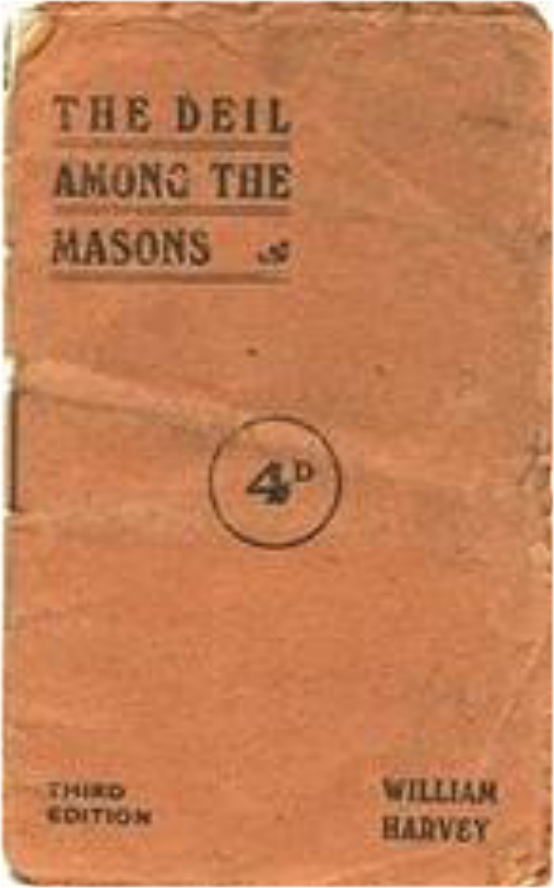
The Deil Among the Masons
IMAGE LINKED: wikimedia Attribution 4.0 International (CC BY 4.0)
The Three Devils
The first is Greed, an ugly chield, (child)
He guards the entrance to the field.
The second, Avarice, midway
You’ll likely meet, Tak’ tent, (take care) an’ pray;
The third’ll try to sneck (cut) your breath,
An ugsome earl – we ca’ him Death.’
‘Dedicated to every merry Mason who has passed from Labour to Refreshment Saint Andrew’s Day’, The Deil Among the Masons is a humorous battle of wits as told to Tam Paton between Bro. James McCracken, Tyler of Royal Bracken Lodge, and the Devil, referred to as Satan, Clootie or Nickie Ben.
As the story opens, Jamie is heading home from a rather long lodge meeting in the early morning hours one Halloween night when he hears the salutation, ‘Good Morning, Brither!’
Astonished by seeing the Devil himself and after initially being frightened out of his wits, in true Scotsman fashion he plucks up his courage and decides to test the Devil to find out just how much he knows about Freemason secrets.
Jamie asks him ‘How auld’s your Mither?’, but the Devil evades the question saying he should have asked about how Jamie’s father is doing.
The proper response would have been to say what year the lodge he belonged to was founded – his Mother Lodge – thus discrediting Satan’s status as a Mason. [6]
At this point Jamie directly challenges the notion that the Devil is really a Brother Mason because he cannot give the correct answer to the challenge question given.
The Devil begins to taunt Jamie and boast that it was he himself that invented Freemasonry.
Jamie replies rebuking him saying:
Guid (Good) guide us! frae God’s beuk (book) I’m able
To prove to a’ wi’ een (eye) to see
You hadn’a haen (haven’t had) the First Degree,
Or, by the Mallet an’ the Level,
You’d never hae taen (have taken) your job as Devil!
The Devil then boasts about his intimate knowledge of Freemasonry.
Though Satan has some knowledge about the Craft, which he relates, he lacks true understanding. Similar to the biblical story of the Devil quoting scripture when Jesus had been fasting in the wilderness for 40 days, the Devil can equally quote Masonic secrets when it serves his purpose.
But he can never be a true Freemason, because even though he possesses knowledge, he lacks enlightenment.
After this, the Devil talks about punishments in Hell unknown to men and takes credit for the infernal demise of Jubelo, Jubelum, and Jubela, as well as other Masons who don’t practice Freemasonry in their hearts.
Nae (no) fire ablow (blowing) will purge their crime.
They’re dammed ayont (beyond) the end o’ time…
Year in, year out, in endless pain.
They cry, ‘Wae’s (woe is) me! The Maister’s slain’.
This is their punishment – to build great temples out of hot but soft lava that will never be completed eventually collapsing, a pointless but Sisyphean task.
The Devil also tells Jamie if he doesn’t quit drinking too much that he too will suffer a similar fate when he dies.
Jamie rebukes the Devil, and after parting company with him gets on his knees to pray to God thanking him for each blessing, promising that he will try to live by the bible, Compasses, and Square, as long as he can be a Mason.
He further promises not to drink in excess, and to follow the Golden Rule while improving his mind.
Though I may be the warst (worst) o’ men.
Lord! save me frae auld Nickie Ben (Satan)!
It’s true afore him I was brave
But I’ll be moderate wi’ the lave (alchohol).
Take nae mair (no more) liquor to excess
But steively (faithfully) tyle (watch) the little press.
William Harvey, much like Robert Burns, is a poet of the people who crafted well-told stories designed to convey important moral lessons hidden beneath a jovial and compelling style.
Because of the thematic elements and simple language of everyday life that he employed, using simple subjects to express big ideas, Harvey’s poems were instantly relatable to the everyman of Scottish society.
Even readers who are not Scottish born innately love the musicality Harvey’s rich Scottish brogue brings to his work.
For those looking for creative fiction about our Gentle Craft, it’s hard to go wrong reading William Harvey!
Footnotes
Resources
[1] Harvey, William. A Collection of his Masonic Works. Temple-Arch Publishers. Inverness-shire. Great Britain. 2000.
[2] Harvey, William. The Complete Manual of Freemasonry. Dundee: T. M. Sparks, Crosswell Printing Works. 1917.
[3] Harvey, William. Robert Burns in Stirlingshire. Stirling: Eneas Mackay, 43 Murray Place. 1899.
[4] Harvey, William. Tam ‘o Shanter and the Merry Mason’s. Dundee: T. M. Sparks, Crosswell Printing Works. 1917.
[5] Harvey, William. How Tamson Got the Third Degree. Dundee: T. M. Sparks. Croswell Printing Works. Peter Street. 1919.
[6] Harvey, William. The Deil Among the Masons. Dundee: T. M. Sparks. Croswell Printing Works. Peter Street. 1919.
Article by: Martin Bogardus
Martin Bogardus hails from New Jersey and is a poet, writer and Associate Editor for The New Jersey Freemason magazine.
He is currently serving as Worshipful Master at the New Jersey Lodge of Masonic Research and Education, No. 1786
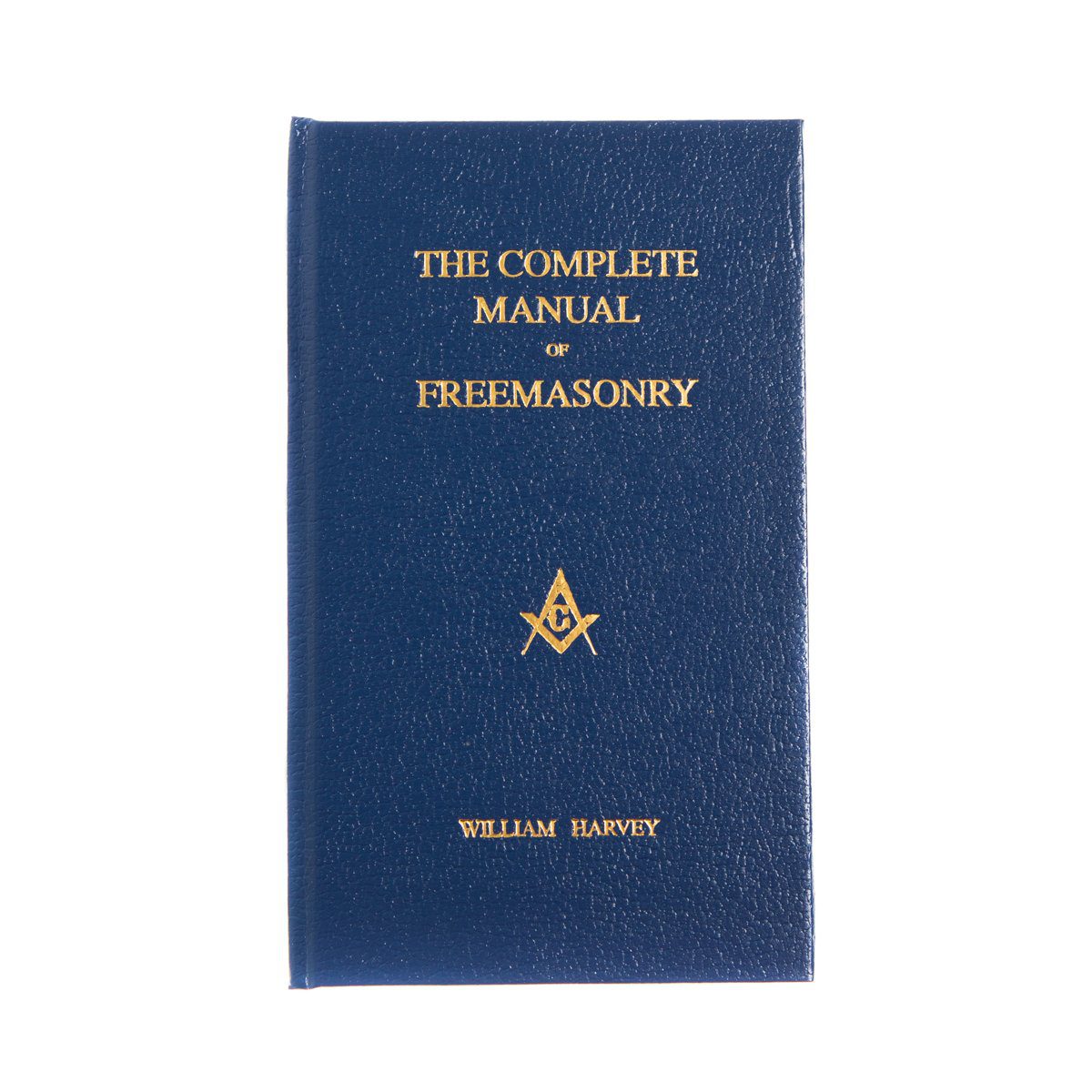
The Complete Manual of Freemasonry
By: William Harvey
This ritual by William Harvey is one of the most enduring Scottish Masonic rituals. Harvey wrote it out of concern that ‘non-Scottish’ elements were creeping into Scottish Freemasonry and the desire to educate new Masons.
This edition has been prepared by the Curator of the Grand Lodge of Scotland together with a new introduction giving some details of the Masonic career of the author.
The ritual includes the three degrees, the Mark ceremony, lectures and three degree catechisms.
It also includes a fold-out symbolic chart.Hardcover. 3 1/8 x 5 inches (80 mm x 127 mm). 160 pages

Symbolism and Discourses on the Entered Apprentice, Fellowcraft and Master Mason Blue Lodge Degrees: Foundations of Freemasonry Series
By: William Harvey
Prominent masonic scholars discuss the meaning and symbolism behind the three Blue Lodge degrees of Freemasonry, which every mason will encounter, during his initiatic journey.
Presented here are the essays: Studies in Blue Lodge Symbolism by H. L. Haywood, Symbolism of the First Degree by Asahel W. Gage, The Wages of an Entered Apprentice by William Harvey, Discourse on the Fellowcraft Degree by Arthur Edward Waite, The Legend of the Winding Stairs by Albert G. Mackey, The Third Degree: Its Ornaments and Emblems by William Harvey and Soliloquy For a Master Mason.

Masonic Symbolism of the Apron and the Altar: Foundations of Freemasonry Series
By: William Harvey
A collection of seven essays exploring the symbolism behind two of freemasonry’s most prominent symbols. Included here are: The Apron, The Masonic Apron, The Rite of Investiture, The Apron, Symbolism in the Apron, The Altar of Freemasonry and The Altar.
Recent Articles: in people series
 Celebrate the extraordinary legacy of The Marquis de La Fayette with C.F. William Maurer's insightful exploration of Lafayette's 1824-25 tour of America. Discover how this revered leader and Freemason was honored by a young nation eager to showcase its growth and pay tribute to a hero of the American Revolution. |
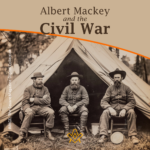 Albert Mackey and the Civil War In the midst of the Civil War's darkness, Dr. Albert G. Mackey, a devoted Freemason, shone a light of brotherhood and peace. Despite the nation's divide, Mackey tirelessly advocated for unity and compassion, embodying Freemasonry's highest ideals—fraternal love and mutual aid. His actions remind us that even in dire times, humanity's best qualities can prevail. |
 Discover the enduring bond of brotherhood at Lodge Dumfries Kilwinning No. 53, Scotland's oldest Masonic lodge with rich historical roots and cultural ties to poet Robert Burns. Experience rituals steeped in tradition, fostering unity and shared values, proving Freemasonry's timeless relevance in bridging cultural and global divides. Embrace the spirit of universal fraternity. |
 Discover the profound connections between John Ruskin's architectural philosophies and Freemasonry's symbolic principles. Delve into a world where craftsmanship, morality, and beauty intertwine, revealing timeless values that transcend individual ideas. Explore how these parallels enrich our understanding of cultural history, urging us to appreciate the deep impacts of architectural symbolism on society’s moral fabric. |
 Discover the incredible tale of the Taxil Hoax: a stunning testament to human gullibility. Unmasked by its mastermind, Leo Taxil, this elaborate scheme shook the world by fusing Freemasonry with diabolical plots, all crafted from lies. Dive into a story of deception that highlights our capacity for belief and the astonishing extents of our credulity. A reminder – question everything. |
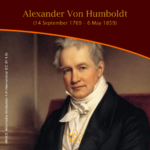 Dive into the extraordinary legacy of Alexander Von Humboldt, an intrepid explorer who defied boundaries to quench his insatiable thirst for knowledge. Embarking on a perilous five-year journey, Humboldt unveiled the Earth’s secrets, laying the foundation for modern conservationism. Discover his timeless impact on science and the spirit of exploration. |
 Voltaire - Freethinker and Freemason Discover the intriguing connection between the Enlightenment genius, Voltaire, and his association with Freemasonry in his final days. Unveil how his initiation into this secretive organization aligned with his lifelong pursuit of knowledge, civil liberties, and societal progress. Explore a captivating facet of Voltaire's remarkable legacy. |
 Robert Burns; But not as we know him A controversial subject but one that needs addressing. Robert Burns has not only been tarred with the presentism brush of being associated with slavery, but more scaldingly accused of being a rapist - a 'Weinstein sex pest' of his age. |
 Richard Parsons, 1st Earl of Rosse Discover the captivating story of Richard Parsons, 1st Earl of Rosse, the First Grand Master of Grand Lodge of Ireland, as we explore his rise to nobility, scandalous affiliations, and lasting legacy in 18th-century Irish history. Uncover the hidden secrets of this influential figure and delve into his intriguing associations and personal life. |
 James Gibbs St. Mary-Le-Strand Church Ricky Pound examines the mysterious carvings etched into the wall at St Mary-Le-Strand Church in the heart of London - are they just stonemasons' marks or a Freemason’s legacy? |
 Freemasonry and the Royal Family In the annals of British history, Freemasonry occupies a distinctive place. This centuries-old society, cloaked in symbolism and known for its masonic rituals, has intertwined with the British Royal Family in fascinating ways. The relationship between Freemasonry and the Royal Family is as complex as it is enduring, a melding of tradition, power, and mystery that continues to captivate the public imagination. |
 A Man Of High Ideals: Kenneth Wilson MA A biography of Kenneth Wilson, his life at Wellington College, and freemasonry in New Zealand by W. Bro Geoff Davies PGD and Rhys Davies |
 In 1786, intending to emigrate to Jamaica, Robert Burns wrote one of his finest poetical pieces – a poignant Farewell to Freemasonry that he wrote for his Brethren of St. James's Lodge, Tarbolton. |
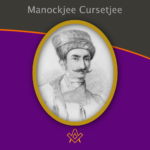 Alex Lishanin explores Mumbai and discovers the story of Lodge Rising Star of Western India and Manockjee Cursetjee – the first Indian to enter the Masonic Brotherhood of India. |
 Aleister Crowley - a very irregular Freemason Aleister Crowley, although made a Freemason in France, held a desire to be recognised as a 'regular' Freemason within the jurisdiction of UGLE – a goal that was never achieved. |
 Sir Joseph Banks – The botanical Freemason Banks was also the first Freemason to set foot in Australia, who was at the time, on a combined Royal Navy & Royal Society scientific expedition to the South Pacific Ocean on HMS Endeavour led by Captain James Cook. |
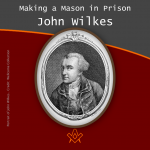 Making a Mason in Prison: the John Wilkes’ exception? |
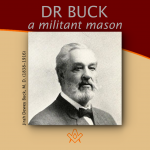 "To be a good man and true" is the first great lesson a man should learn, and over 40 years of being just that in example, Dr Buck won the right to lay down the precept. |
 Elias Ashmole: Masonic Hero or Scheming Chancer? The debate is on! Two eminent Masonic scholars go head to head: Yasha Beresiner proposes that Elias Ashmole was 'a Masonic hero', whereas Robert Lomas posits that Ashmole was a 'scheming chancer'. |
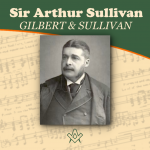 Sir Arthur Sullivan - A Masonic Composer We are all familiar with the comic operas of Gilbert and Sullivan, but did you know Sullivan was a Freemason, lets find out more…. |
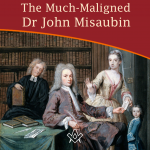 The Much-Maligned Dr John Misaubin The reputation of the Huguenot Freemason, has been buffeted by waves of criticism for the best part of three hundred years. |
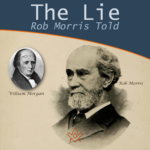 Was William Morgan really murdered by Masons in 1826? And what was the lie Masonic author Rob Morris told? Find out more in the intriguing story of 'The Morgan Affair'. |
 Lived Respected - Died Regretted Lived Respected - Died Regretted: a tribute to HRH The Prince Philip, Duke of Edinburgh |
 Who was Moses Jacob Ezekiel, a Freemason, American Civil War Soldier, renowned sculptor ? |
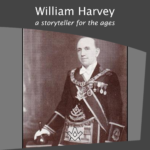 A Masonic author and Provincial Grand Master of Forfarshire in Scotland |
 Who was Philip, Duke of Wharton and was he Freemasonry’s Loose Cannon Ball ? |
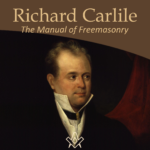 Richard Carlile - The Manual of Freemasonry Will the real author behind The Manual of Freemasonry please stand up! |
 Nicholas Hawksmoor – the ‘Devil’s Architect’ Nicholas Hawksmoor was one of the 18th century’s most prolific architects |
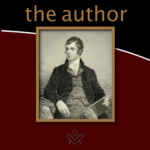 By Bro. Anthony Oneal Haye (1838-1877), Past Poet Laureate, Lodge Canongate Kilwinning No. 2, Edinburgh. |
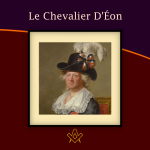 The Curious Case of the Chevalier d’Éon A cross-dressing author, diplomat, soldier and spy, the Le Chevalier D'Éon, a man who passed as a woman, became a legend in his own lifetime. |
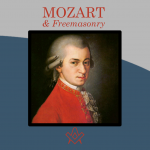 Mozart Freemasonry and The Magic Flute. Rev'd Dr Peter Mullen provides a historical view on the interesting topics |
masonic knowledge
to be a better citizen of the world
share the square with two brothers

click image to open email app on mobile device










